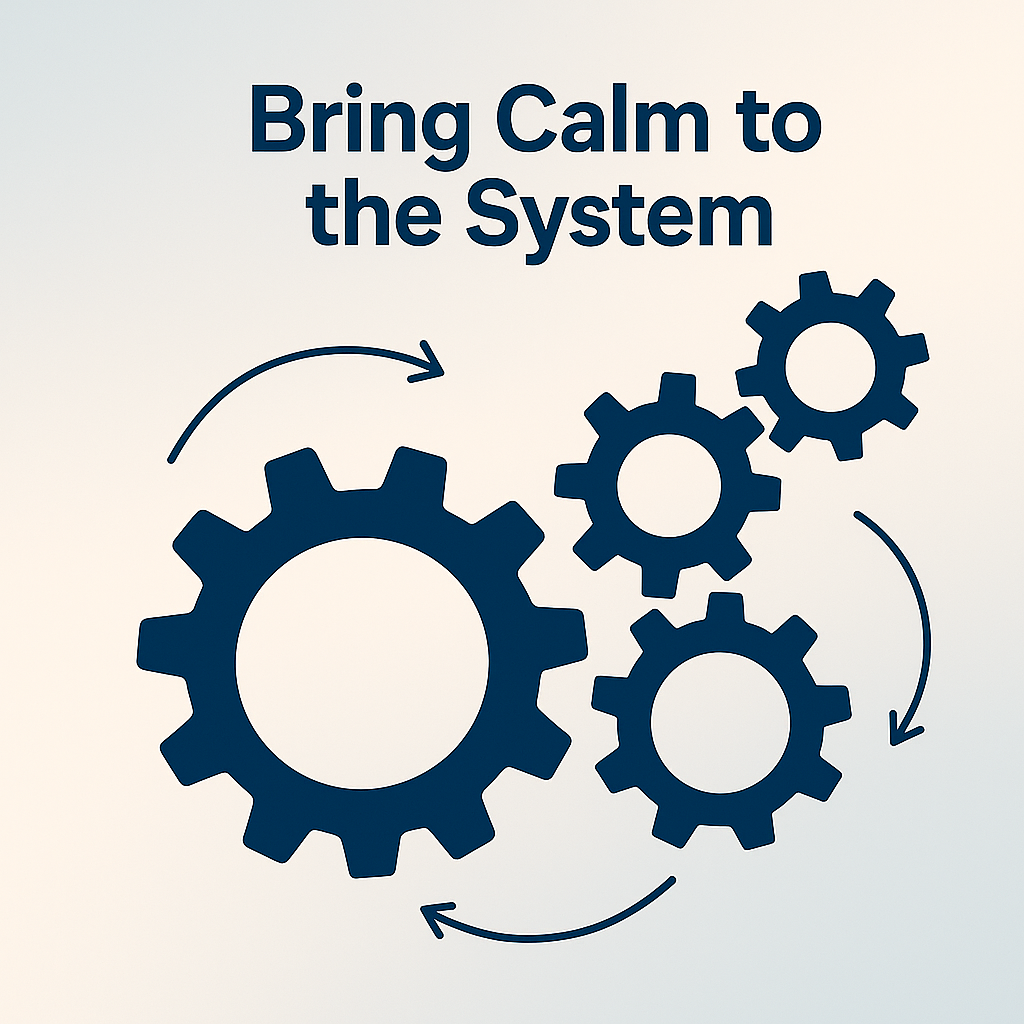

Six months after the restructuring, the internal headlines read: “leaner, faster, more efficient.”
On paper, yes. Costs are down. Boxes are rearranged.
On the shopfloor, a different reality: teams seek orientation, interfaces grind, and the daily question is:
“Who owns this now that Markus is gone?”
Leaders jump between day-to-day and firefighting. Everyone works hard — but no one is sure it’s the right work.
The organization survived, yet it works against itself. Performance fluctuates. Morale tilts.
The market is heating up — but inside, trust in the system is thin.
This is no longer a structure problem. It’s a stability problem.
Not speed — steerability.
👉 How do you restore calm after a restructuring — and make performance predictable?

After a restructuring, the real work begins — in the system, not on the slide.
The form changed; behaviors, routines, and mental models did not.
Many organizations enter a “between state”: formally re-shaped, practically disoriented.
To make performance predictable, you need three things every stable system shares:
A strategy that only the top team “gets” won’t move an organization.
People don’t follow slides — they follow meaning and clarity.
In complex operations, operators and supervisors often see constraints and opportunities before management does.
Leadership becomes effective when teams:
Move from broadcast to buy-in:
Outcome: participation creates identification — and energy replaces control.
Direction is not delivery. After reorganizations, roles shift, routines break, and teams work hard but out of sync.
Introduce a unified leadership cadence that blends structure with ownership:
Run these routines where the work happens.
Teams make operational decisions within the target condition.
Leaders provide context, resources, and interface management — not micro-solutions.
Digital boards and simple dashboards make progress visible and bottlenecks unmissable.
👉 Result: the system starts to solve itself.
When everyone knows what “good” looks like this week, safety grows.
When teams measure their own output, responsibility grows.
When leadership holds the frame (not the wrench), stability grows.
Many restructurings end too early.
The new organogram stands, KPIs are defined — and everyday life erodes the system.
An MOS creates sustainable performance only if it is embedded and reviewed regularly — as a learning loop, not a compliance check.
Observe → Assess → Improve must match the organization’s rhythm.
Use a maturity model to make progress tangible:
1️⃣ Acceptance (20%)
2️⃣ Understanding (40%)
3️⃣ Adherence (60%)
4️⃣ Application (80%)
5️⃣ Appropriation (100%)
From about 50% maturity, run peer audits by your own leadership:
Support this with simple checklists, digital tools, and feedback loops.
When structure is reviewed, it stays alive.
When leadership is reflected, it stays effective.
Leading indicators: cadence adherence, action closure rate, plan vs. actual throughput, escalation lead time.
Restructuring creates new form. Stability creates new function.
You get predictable performance when the organization knows
where it’s going, how it steers, and what it does every day.
When these three work together, you achieve what every post-restructuring operation seeks:
calm in the system — not stillness, but stability in flow.
Because real leadership isn’t the heroic fix in crisis —
it’s building a system that performs without constant intervention.
That is the craft of Stable Operations.
When did calm truly return after your restructuring — when the chart changed, or when the system held?
How do you involve teams in activating strategy?
What’s your leadership cadence?
How do you audit and evolve your MOS?
Comment below or reach out — happy to compare notes.